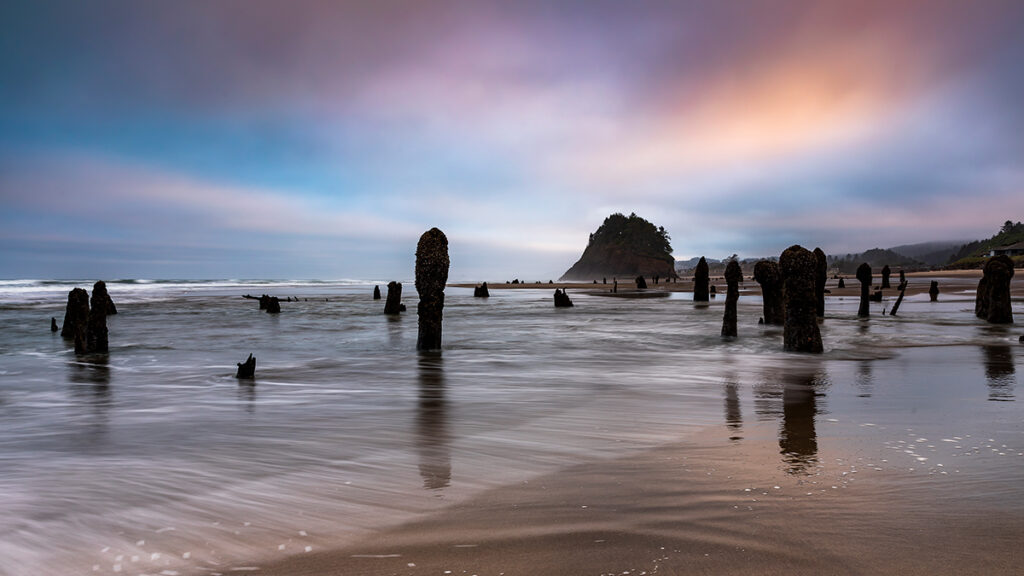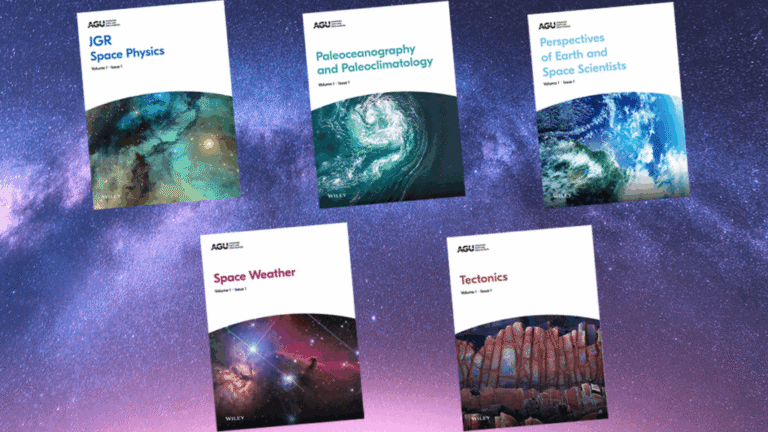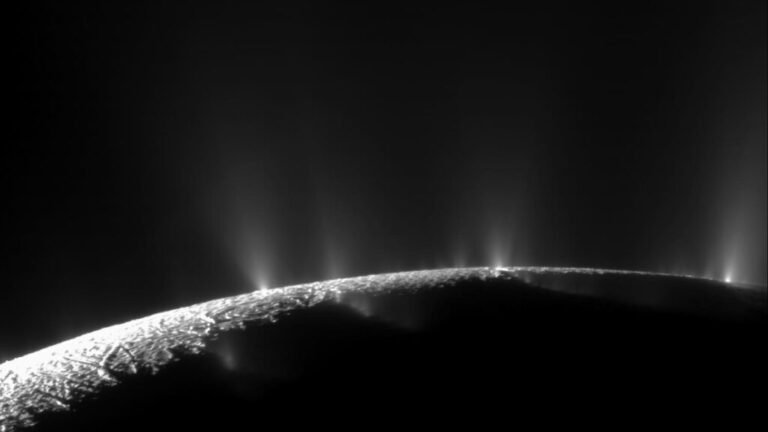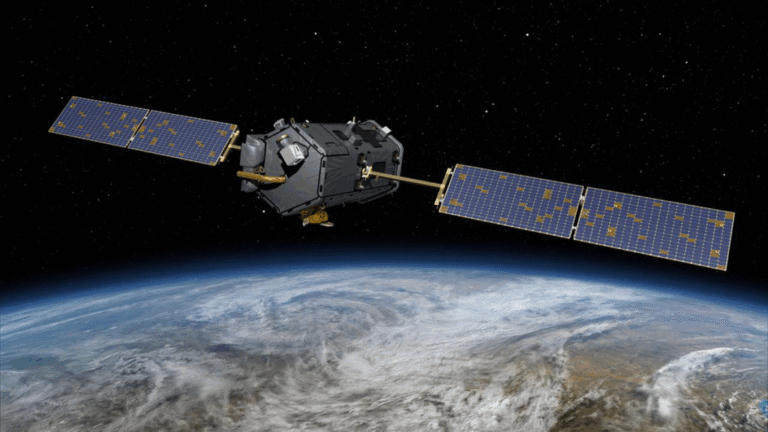

Successfully predicting earthquakes sounds like a dark art.
However, new research hints it may be possible: Sediment cores extracted from the Pacific seafloor suggest that two major fault systems along the western coast of the United States and Canada might be partially synchronized. After an earthquake on the southern part of the Cascadia subduction zone, an earthquake soon after on the northern part of the San Andreas fault appears to occur roughly half of the time, the new findings reveal. These results, published in Geosphere, provide evidence of stress triggering, which has long been invoked to explain how activity on one fault might lead to activity on another nearby.
Fault zones persist across wide swaths of our planet, but the one that stretches onshore and offshore from California to British Columbia, Canada, is particularly complex. The vertical strike-slip San Andreas fault, in the south, intersects the Cascadia subduction zone off the coast of Northern California at a point known as the Mendocino Triple Junction.
There’s an amalgam of different types of large, active faults, and the Mendocino Triple Junction itself is migrating northward, said Chris Goldfinger, an earthquake geologist at Oregon State University in Corvallis. “It’s a very complicated situation.”
Earthquake Here, Earthquake There
Researchers have long wondered whether the northern region of the San Andreas fault and the southern part of the Cascadia subduction zone might be affecting one another. The idea isn’t far-fetched: Scientists know that earthquakes, which result from sudden releases of stored-up energy on a fault, relieve stress on one part of a fault but often do not make that stress disappear. “When it ruptures, [a fault] relieves the local stress. But then it transfers stress to other things around it,” said Goldfinger. Such stress transfer could, in turn, trigger activity on another nearby fault.
In 2008, Goldfinger and his colleagues published a study of earthquakes along the northern San Andreas and Cascadia subduction zone. To determine when the earthquakes happened, the team used radiocarbon dating of turbidites, which are sedimentary deposits left on the seafloor when ground shaking causes underwater landslides. The researchers found several apparent pairs of earthquakes that seemed to have occurred around the same time—that is, within decades or centuries of one another. However, the significant age uncertainties precluded drawing any definitive conclusions about paired earthquakes, Goldfinger said.
Mysterious Turbidites
Since then, Goldfinger and his collaborators have obtained more turbidite records from sediments in the ocean and also analyzed inland sediments from places like Lake Merced near San Francisco. With those new data, which stretch back roughly 3,100 years, in hand, the team returned to the question of paired earthquakes. The researchers also revisited a mystery that had been bothering them since the late 1990s: Why did some turbidites collected from near the Mendocino Triple Junction appear to be upside down?
“They had all of the sand at the top, which is not where it should be.”
Turbidites are layers of sand, mud, clay, and silt that typically are coarsest near the bottom and become finer grained at the top. That’s because gravity causes the coarsest particles—the sand—to settle out first and smaller particles to be deposited later as the current slows down. But many of the turbidite beds recorded in cores from near the Mendocino Triple Junction appear to be capped with sand, rather than finer sediment. That’s unexpected, said Goldfinger. “They had all of the sand at the top, which is not where it should be.”
It’s taken more than 2 decades for the team to finally arrive at an explanation for those anomalous turbidites.
They are, in fact, two turbidite beds, Goldfinger and his colleagues concluded. The sand on top is actually a second turbidite bed formed close to an earthquake source whose finer particles were carried away and deposited at more distant locations.
The researchers furthermore inferred that these so-called doublet turbidites were created by two different earthquakes occurring on different fault systems—one in the Cascadia subduction zone and one on the San Andreas fault. The tip-off was that the occurrence of doublet turbidites systematically decreases with increasing distance from the Mendocino Triple Junction. The San Andreas–derived turbidite beds fade away to the north, and Cascadia-derived turbidite beds fade away to the south. That’s expected because shaking from San Andreas earthquakes will be weaker the farther north one goes and shaking from Cascadia earthquakes will correspondingly be weaker the farther south one goes.
“These doublets should fade in a specific way, and they do,” said Goldfinger.
The team found that slightly more than half of the 18 turbidites they studied in the southern Cascadia subduction zone were closely associated in time with turbidites from the northern San Andreas. In those 10 cases, the median ages of the earthquakes inferred from radiocarbon measurements differed from their associated quake on the other fault system by roughly 60 years, which is about equal to the data’s uncertainty. Eight of those pairs furthermore exhibited a doublet structure, indicating that they occurred especially close together in time.
The similar timing and unique stacking pattern of the doublets suggest that Cascadia earthquakes generate regional stresses that trigger subsequent earthquakes on the northern San Andreas fault.
These findings convincingly demonstrate that the northern San Andreas and the southern Cascadia subduction zone are at least partially synchronized, said Kathryn Materna, a geophysicist at the University of Colorado Boulder not involved in the work. “Seeing half of them correlated on opposite sides of the triple junction is a pretty striking correlation,” she said. Because these faults tend to unleash earthquakes at different rates, there’s no reason their events should line up closely in time, said Materna. “They’re different systems with different recurrence intervals.”
Patiently Ducking and Covering
“The best fit to the data, by far, is to have Cascadia go first.”
Goldfinger and his colleagues believe that in cases of paired earthquakes, Cascadia is the one leading the charge. “The best fit to the data, by far, is to have Cascadia go first,” said Goldfinger.
Understanding why will take some modeling work. It’d also be interesting to dig into whether a Cascadia event of a certain magnitude is necessary to unleash shaking on San Andreas, he said. “It makes sense that there must be a triggering threshold.”
These findings suggest that a large Cascadia earthquake might be followed by ground shaking on the San Andreas. But ducking and covering after Cascadia lets loose could require some patience. The timing between paired earthquakes likely varies substantially, Goldfinger said. “It could be anything from minutes to decades.”
—Katherine Kornei (@KatherineKornei), Science Writer
Citation: Kornei, K. (2025), When Cascadia gives way, the San Andreas sometimes follows, Eos, 106, https://doi.org/10.1029/2025EO250419. Published on 12 November 2025.
Text © 2025. The authors. CC BY-NC-ND 3.0
Except where otherwise noted, images are subject to copyright. Any reuse without express permission from the copyright owner is prohibited.


